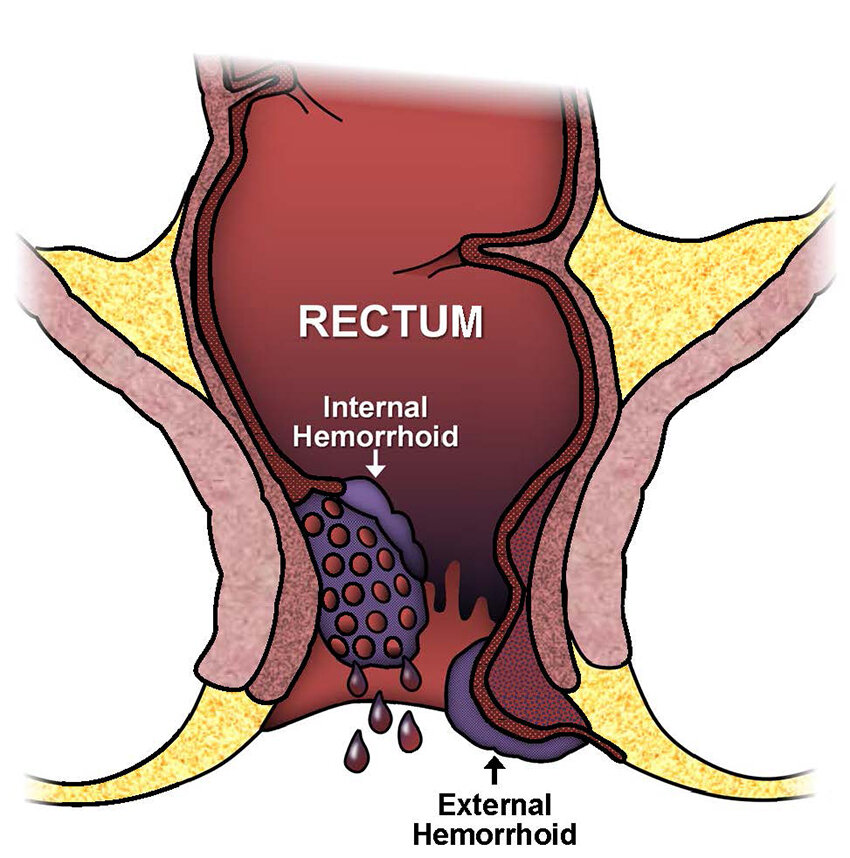Haemorrhoids
What are haemorrhoids?
Haemorrhoids are “varicose veins” of the anal canal. They consist of engorged blood vessels covered by lining of the anal canal. Haemorrhoids are considered normal anal cushions when they are located internally. However with straining to defecate, the supporting connective tissues of the anal canal weaken. This leads to enlargement of the haemorrhoids causing it to bleed, prolapse and become external.
What are the symptoms of haemorrhoids?
Haemorrhoidal bleeding is a typical symptom of Haemorrhoids, and is often described as having blood on the toilet paper or blood that drips or sprays into the toilet bowl (it is important that this is not assumed in all cases of rectal bleeding without appropriate investigation). Prolapsed haemorrhoids can result in increased mucus discharge around the anus causing itch and poor perianal hygiene. In the acute situation, prolapsed haemorrhoids when thrombosed will cause severe pain and an external lump that indicate a clot in the external vessel.
How do you treat haemorrhoids?
A/Prof Terence Chua will seek to understand your predominant symptoms associated with the haemorrhoids and determine the most appropriate treatment option. Many patients with haemorrhoids can be managed by simple behaviour and lifestyle modification. Rubber band ligation is easy to perform in a minor procedure room for patients with internal haemorrhoids. Significant prolapsing haemorrhoids will require surgical treatment such as haemorrhoidectomy.

